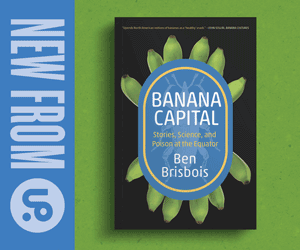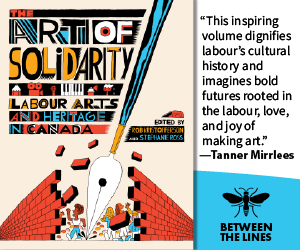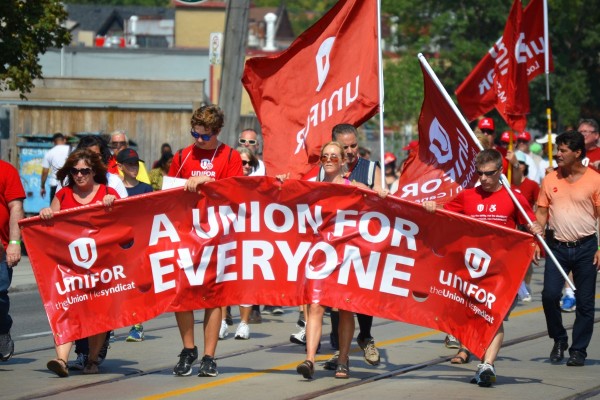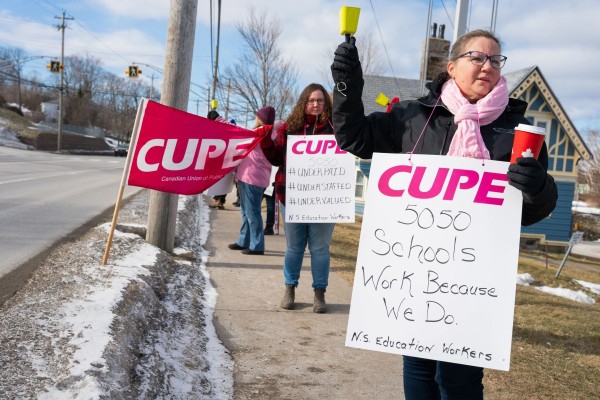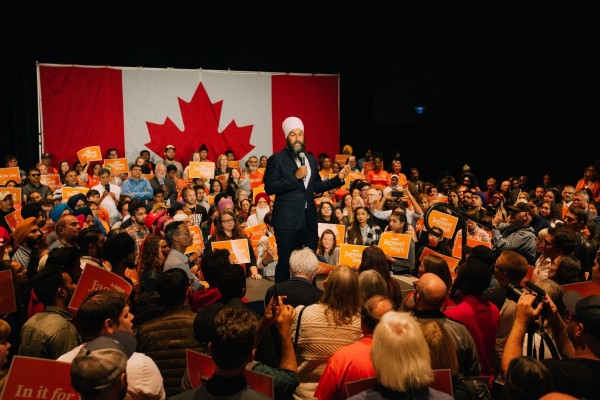Looking forward: five predictions for the Canadian Left in 2017

Photo by Matt Jiggins
There’s no sugar-coating it: 2016 was a disappointing year for the Left, as we saw the Democratic Party’s attack on Bernie Sanders, the election of Donald Trump, right-wing motivations for Brexit in the United Kingdom, and the intensification of anti-immigrant rhetoric at home and abroad. But with a new year comes new hopes, opportunities and challenges. Here are five predictions for how the Canadian Left can find success going forward.
1. The importance of social movement organizing will increase
Doom and gloom over 2016 has overshadowed how issue-based grassroots movements like the Fight for 15 and Fairness have found success. These campaigns in Canada and beyond have demonstrated that, even in the face of regressive political institutions, efforts within communities can have profound effects. During 2017, I predict that such movements will not only see more success, but will have even greater impact on formal political parties, who see their successes as proof that such policies can be politically viable. Due in part to grassroots pressures, the Alberta NDP has begun a gradual move to a $15 minimum wage by 2018, and the Ontario NDP has also offered official support to the policy.
2. The Left will have to better harness populist energies
“Populism” is often painted as an ideological formation which rejects intellectuals, tolerance, pluralism and progress. And while some of this can be said to apply to right-wing populist variants, the reality is that leftism without a populist edge risks losing daily relevance with the people and ideals it claims to represent.
Populist movements have for centuries been essential in building democracies and, in Canada, a hybrid coalition of intellectuals and workers built the CCF-NDP. At its core, Left populism is less about ceding power to the “intolerant rabble” and more a recognition that our current society suffers from a democratic deficit in workplaces, communities and the wider economy. Accordingly, a platform centred on social and economic democracy has to be at least in part a populist effort.
Some self-defined progressives might scoff at things like “pocketbook politics,” but if socialists desire both power and improving the plight of working-class people, the daily economic realities of those people cannot be discounted. Left movements that harness popular discontent for inaccessible systems of power and influence will find sustained success in 2017.
3. The Liberal Party’s historical interests will leave openings for critiques from the Left
After Justin Trudeau’s win in 2015, many voters were just happy to see Harper gone, and while Trudeau remained popular across 2016 with most Canadians, cracks in his progressive façade began to show in his government’s attacks on young workers’ expectations, his broken promises to indigenous peoples, and his failure to uphold basic labour standards in the federal public service. All this has created space for unions, grassroots movements and the NDP to take the fight to Trudeau, by highlighting the conflict that exists between the Liberal Party’s feel-good rhetoric on the one hand, and its allegiances to social and economic elites on the other. The cracks will only get bigger as Trudeau is called to “put up or shut up” on unfulfilled promises, and as economic downturns force him into a historical Liberal pattern of using economic crises to attack workers.
There won’t be a federal election for a couple years yet, but 2017 might well be the pivot year where Trudeau loses the confidence of those voters the NDP will need to recapture.
4. The question of intergenerational inequality will only become more prominent
As noted above, one of the Trudeau regime’s bigger missteps in 2016 was the suggestion that young people have little option but to prepare for a future with no job security. And it was on this issue that Trudeau faced his first significant backlash, as young workers at a Canadian Labour Congress event protested his failure to keep true to his promises and messaging in the election. In 2017, I predict that young worker issues will intensify, as the prospect of decent pay, secure employment and dignified retirements become more elusive, even as increasing housing and education costs threaten to close off key life milestones for millions of young Canadians.
Those that can tap into this generational discontentment will find success in 2017. Labour unions can play their part by resisting the turn to two-tier contracts, which codify unequal pay for equal work. The Fight for 15 and Fairness can continue to collaborate with young workers, and target their message to those low-wage industries which disproportionately employ young people. Finally, the NDP has a duty to demonstrate how the party’s current efforts and historical legacy are dedicated to giving a fair shake to young Canadians in the workplace and in the wider community.
5. The NDP leadership race will offer strong options for the Left
After rejecting Tom Mulcair in 2016, the NDP is expected to make its choice for leader this year. I predict at least three viable candidates will emerge: Peter Julian, Charlie Angus and Niki Ashton.
Julian stands out as the establishment candidate. If one — for example — believes that Mulcair failed less for his centrism than for specific strategic errors, then someone like Julian might be a worthy successor. But both Ashton and Angus offer platforms, identities and worldviews that can tap into existing and latent Left energies.
Angus on the face of it appears to be a standard politician in terms of his age, gender and ethnicity, but his background and work set him apart. Angus — who like a majority of Canadians holds no university degree — knows how to relate to regular folks, but still has a deep commitment to progressive causes, chief among them the plight of Indigenous people. Angus has attacked poverty and inequalities in terms of access to healthcare, housing and education within First Nations communities. Additionally, he has given these issues a spotlight in his writing, music, speaking engagements and the manifestation of his social Catholicism.
In addressing inequality in ways that include a diversity of Canadians, but also in an accessible language, Angus offers a path towards a progressive populism that can play well in big and small town Canada.
Ashton, for her part, represents a new generation. She is young, worldly, highly educated and deeply passionate about issues of social justice. She has been a consistent feminist voice and like Angus has made Indigenous issues a priority in her work. But what Ashton uniquely brings is her championing of young Canadians and the issues they face. She has travelled the country to raise awareness of how the trend towards precarity is bad not only for individual young workers, but for their families and communities.
Young people might be hard to get out to the polls, but when they are acknowledged in political discourse they can be a powerful bloc. And because much of the worry for the next generation comes from the parents and grand-parents of young workers, Ashton’s message could be highly effective in 2017.
In the end, 2017 can be a year of crucial gains and preparation for the Canadian left. It can find some major victories in the here-and-now with grassroots efforts, but it can also do the groundwork for many long-reaching political gains.
Christo Aivalis, a member of the CD web committee, is an adjunct professor of history at Queen’s University. His dissertation examined Pierre Trudeau’s relationship with organized labour and the CCF-NDP, and has been accepted for publication with UBC Press. His work has appeared in the Canadian Historical Review, Labour/le Travail, Our Times Magazine, Ricochet and Rankandfile.ca. He has also served as a contributor to the Canadian Press, Toronto Star, CTV and CBC. His current project is a biography of Canadian labour leader A.R. Mosher.


